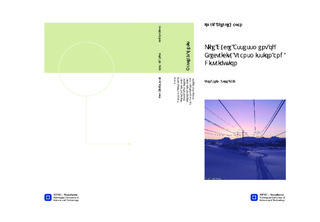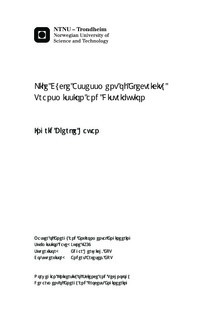| dc.description.abstract | As the integration of renewable electricity production progresses and the energy consumption pattern evolves, the transportation of energy is essential for securing sufficient supply while meeting political targets. Power grid renewal and expansion is likely to increase in the future, therefore an understanding of the environmental implications from transmission and distribution (T&D) of electricity is necessary.This master thesis presents a life cycle assessment (LCA) of the Norwegian power grid, with case-specific data from the Nord-Trøndelag grid, owned and operated by NTE Nett. The aim is to determine the environmental impacts associated with the T&D of electricity, and the functional unit is the delivery of 1 MWh of electrical energy, assuming 2011 conditions. Arda software is used for the impact calculations, applying the ReCiPe midpoint hierarchist method and processes from the Ecoinvent database.The Norwegian power grid operates with three different voltage levels, namely the distribution grid, the regional grid and the main grid. Each of these grid levels are modelled individually and compared to each other, and three different scenarios for electricity production are run for each model.When modelling the T&D grid with a Norwegian electricity production, the distribution grid impacts dominate in most of the 18 Ecoinvent midpoint categories. In the case of climate change, the amount from the three grid levels combined is 13.0 kg CO2-equivalents per MWh of delivered energy. Of these, 9.2 kg stem from the distribution grid, 2.9 kg from the regional grid and 0.9 kg from the main grid. With the Nordic and European production mixes, climate change impacts increase drastically in all grid levels.Attention was also paid to the insulating gas found in the grid components. SF6 is a greenhouse gas with global warming potential 23,900 times higher than that of CO2, and it is utilised in the power grid due to its unique physical properties. In this thesis, leakages of SF6 were found to contribute surprisingly little to the climate change impacts, but it was deemed likely that the model contains an underestimation for this aspect of grid operation.Comparing the impacts from electricity transmission to the power production showed that in the energy system as a whole, the significance of T&D is relatively small. However, the less fossil fuel based the electricity production is, the more significant are the infrastructure impacts. Therefore, in case of a future transition towards a more renewable electricity production, the environmental strains of the physical grid will become more important.Even if power grids in themselves strain the environment, this infrastructure makes the exchange of electricity possible. The advantages of a reliable power grid may outweigh the detriment to the environment, as the infrastructure plays a crucial role in phasing in more renewable energy. | nb_NO |

